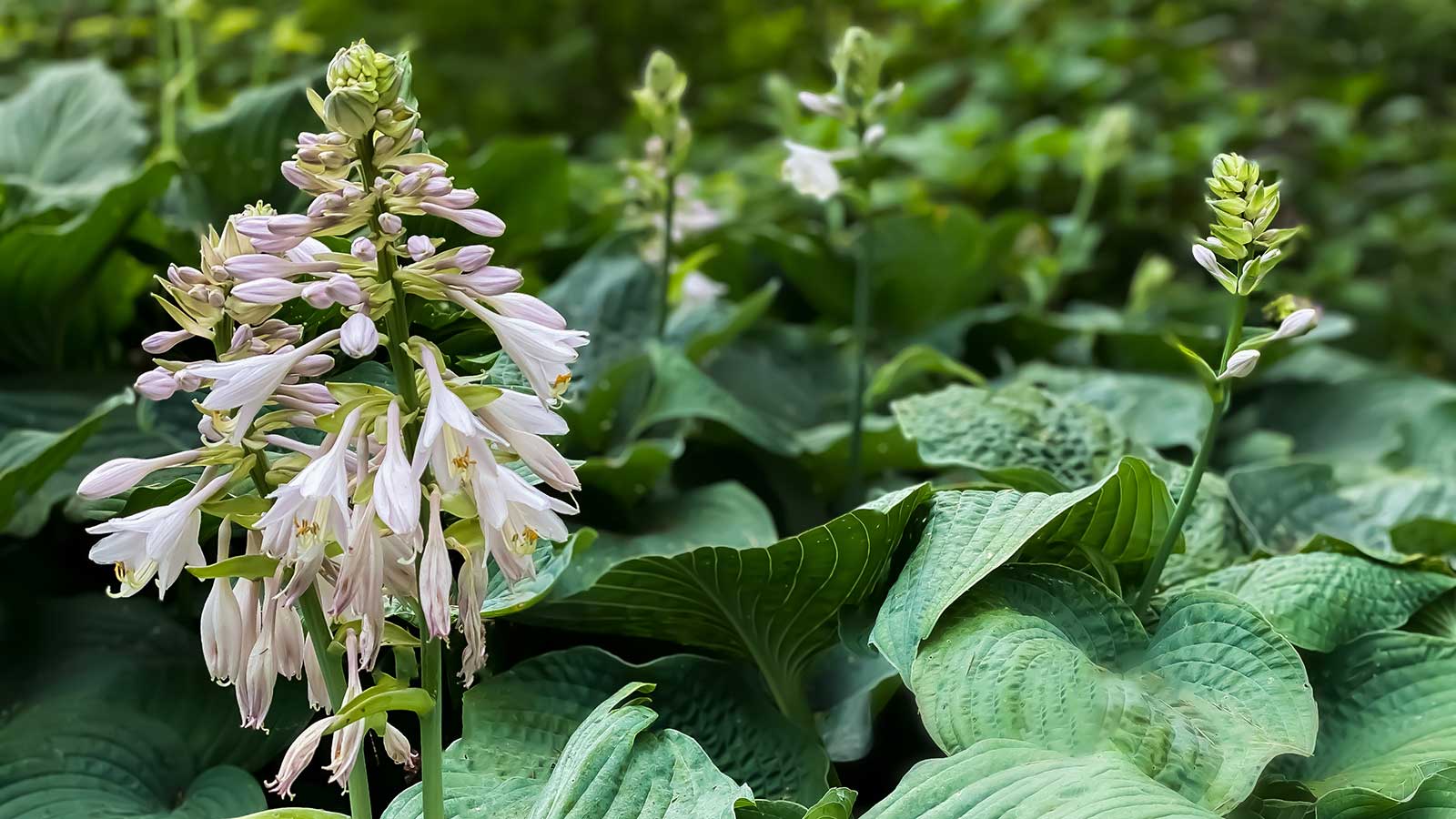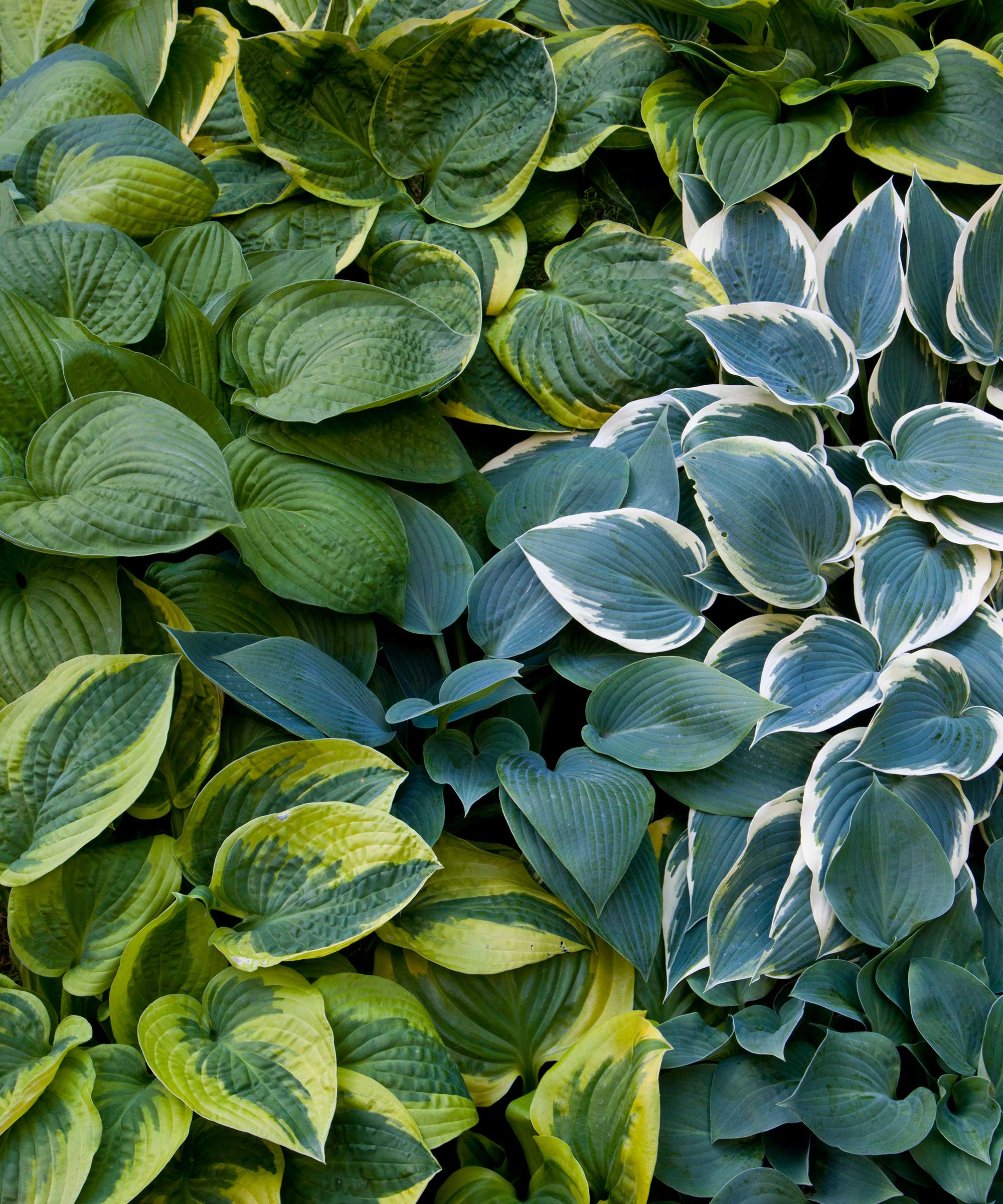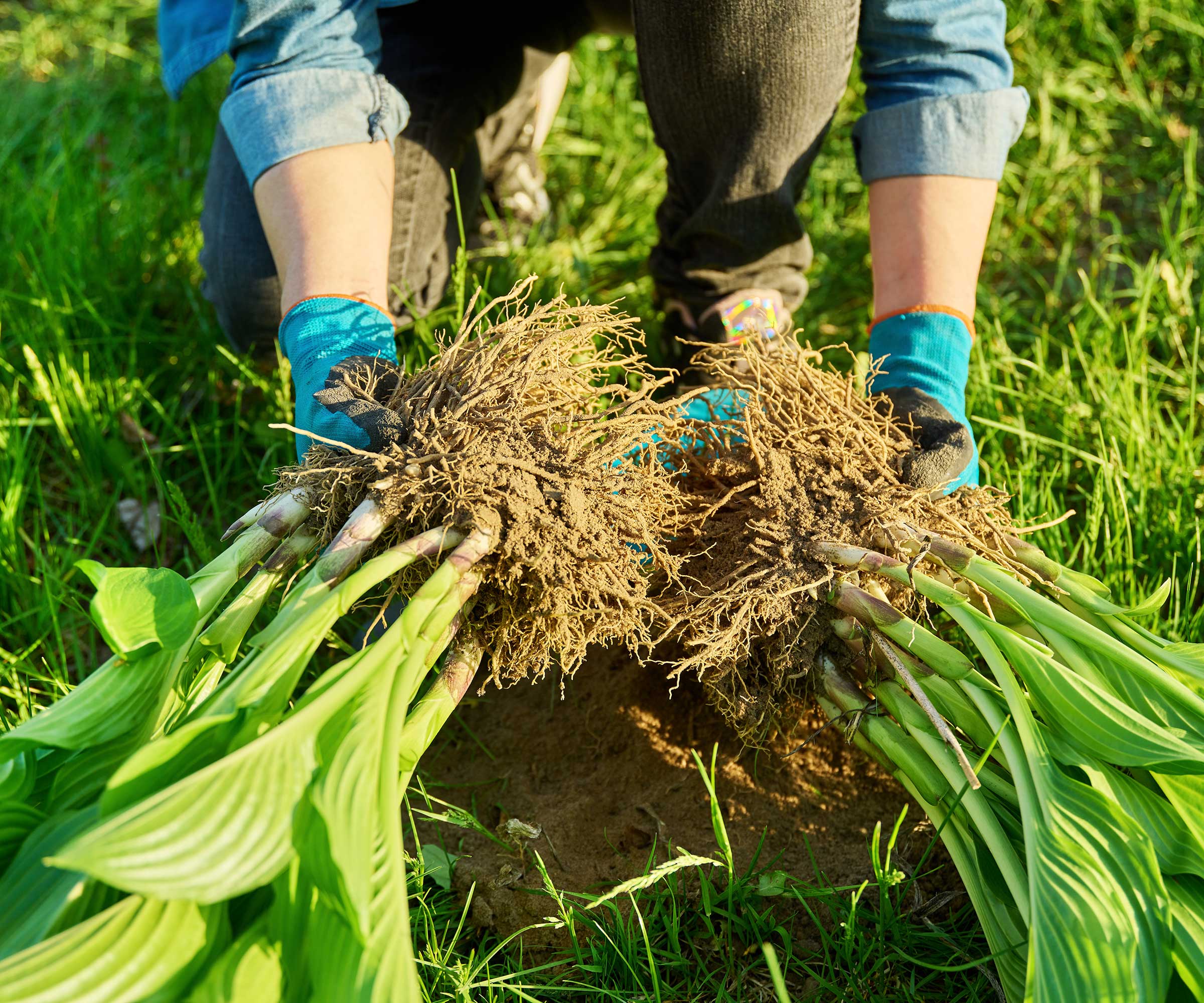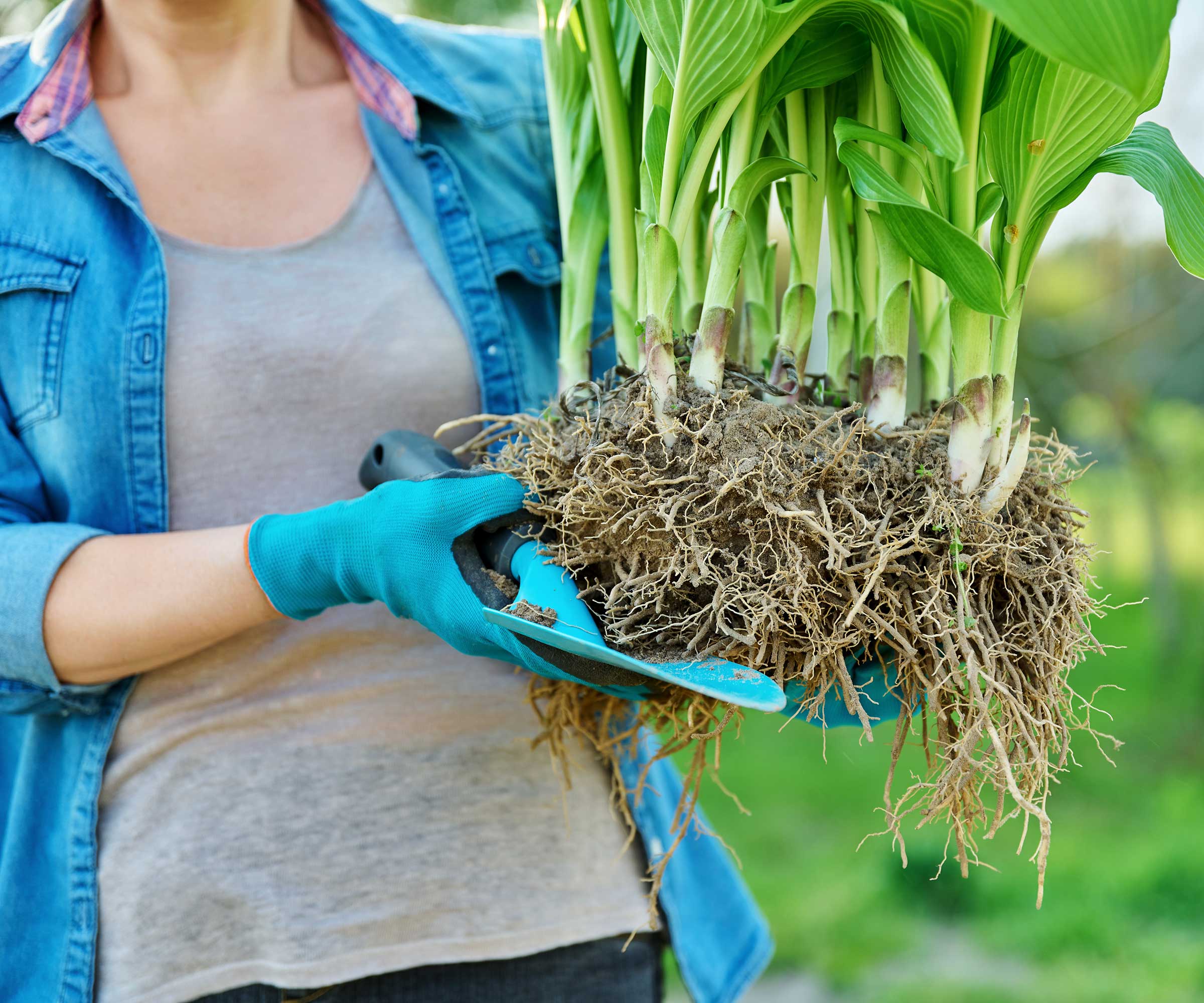
Hostas are wonderful additions to the garden and easy to grow – as long as you keep slugs and snails at bay who love to nibble on their leaves. A popular ground cover plant that thrives in shade, they are most loved for their ornamental foliage that comes in a range of colors and sizes, depending on the variety. Many offer summertime flowers, too, in hues of white or light purple.
As these perennials are long-lasting, they can become congested over time and their performance can dwindle as a result. The solution is to divide hostas up and replant the sections into separate areas or pots in your yard. The process is simple, as this guide explains. And, as it's also a means to propagate these plants, it'll feel like you've got new ones for free.
- Shop hostas at Burpee
- Shop hostas at Nature Hills

When to divide hostas
Ruth Hayes, a garden expert for Homes & Gardens, recommends dividing hostas every few years. The Royal Horticultural Society (the RHS) agrees, specifying to do so once every four to five years.
In terms of the best time of year to divide hostas, Anne Swithinbank, a gardening expert, recommends early spring – 'just as they show signs of growth.'
She adds that the task can also be done in late summer or early fall. However, ensure the leaves have turned yellow and died back – if they are still green, division will stress the plant, explains the team at Amateur Gardening magazine. You can cut hostas back when they reach this stage, too, for a tidier appearance.

How to divide hostas
It takes four simple steps to split up a congested hosta plant. You'll be rewarded with stronger, healthier plants as a result, whether you're growing them in your borders or in a container display.
- Lift a large clump of hostas and use a sharp spade or a strong knife to split it into well-budded and rooted sections, advise the Amateur Gardening team. Cut downwards from the crown of the plant.
- Replant the divisions promptly, says Anne. If you're moving them into pots, cover the drainage holes with 2in of crocks to ensure that excess moisture can escape when you water them, the Amateur Gardening team recommends.
- The RHS says to replant the sections at the same depth as they were planted originally. If planting the sections into pots, top the compost with 1in of slate chippings to stop it from drying out, the Amateur Gardening experts add.
- Water them in and, if you're planting them in the spring, feed them with a balanced, granular fertilizer. In borders, add a layer of mulch to prevent the soil from drying out and suppress the growth of weeds.
The sections should flower from their second year of being planted.

Hostas are particularly well-suited to woodland garden schemes, but can work just as well in modern backyards, too. Dividing these plants will enable you to spread them across your outdoor space and give gloomier corners new life with their variegated, blue-green, or acid-lime tones.







